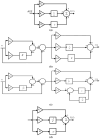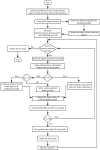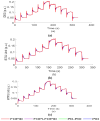Chaotic chimp-mountain gazelle optimized FOPID control for frequency regulation in islanded airport microgrids with heterogeneous energy systems
- PMID: 40820161
- PMCID: PMC12358549
- DOI: 10.1038/s41598-025-98976-z
Chaotic chimp-mountain gazelle optimized FOPID control for frequency regulation in islanded airport microgrids with heterogeneous energy systems
Abstract
Ensuring stable frequency regulation in islanded airport microgrids is a challenging task owing to the intermittency of renewable energy sources, unpredictable load variations, and nonlinear dynamics. Conventional optimization techniques often struggle with premature convergence and sub-optimal controller tuning, leading to a poor transient response and inadequate frequency stabilization. These challenges necessitate an advanced optimization strategy that can efficiently handle dynamic airport environments while ensuring enhanced frequency stability. To address these issues, this study proposes a Chaotic Chimp Mountain Gazelle Optimizer (CCMGO) algorithm. The CCMGO algorithm integrates the exploration capabilities of the Chimp Optimization Algorithm (ChOA) with the fast convergence of the Mountain Gazelle Optimizer (MGO), which is further enhanced by chaotic mapping to improve search diversity and avoid local optima. The effectiveness of the proposed CCMGO optimized dynamic controller was evaluated under various load perturbation scenarios, including impulse, step-ramp, and stochastic disturbances. The system considered here is a multi-source airport model integrating wave, wind, solar, biogas turbines, battery energy storage systems, ultra-capacitors, and electric vehicles. Simulation results demonstrates that the CCMGO optimized fractional order proportional-integral-derivative controller exhibits better performances compared to the conventional genetic algorithm and particle swarm optimization based controllers, as well as contemporary metaheuristic algorithms like grey wolf optimizer and whale optimization algorithm. The proposed methodology achieves notable reductions in frequency deviation, shorter settling time, and enhanced transient response characteristics.
Keywords: Chaotic chimp-mountain gazelle optimizer; Grid stability; Heterogeneous generation; Load frequency regulation; Renewable energy sources.
© 2025. The Author(s).
Conflict of interest statement
Declarations. Competing interests: The authors declare no competing interests. Ethics Approval: The authors affirm adherence to accepted ethical standards for original studies. Informed consent: All authors agree with the manuscript’s content and have followed all relevant instructions provided by the journal’s rules, regulations, and editors. All authors have approved the manuscript for submission to this journal and are equally in agreement with its content. AI Declaration: AI tools were used to enhance the readability and language of the research article but were not employed to replace key tasks that should be performed by the authors, such as interpreting data or conducting scientific calculations.
Figures




























References
-
- Latif, A., Hussain, S. S., Das, D. C. & Ustun, T. S. State-of-the-art of controllers and soft computing techniques for regulated load frequency management of single/multi-area traditional and renewable energy-based power systems. Appl. Energy266, 114858 (2020).
-
- El-Fergany, A. A. & El-Hameed, M. A. Efficient frequency controllers for autonomous two-area hybrid microgrid system using social-spider optimiser. IET Gener. Transm. Distrib.11(3), 637–648 (2017).
-
- Latif, A., Das, D. C., Ranjan, S. & Barik, A. K. Comparative performance evaluation of WCA-optimised non-integer controller employed with WPG-DSPG–PHEV based isolated two-area interconnected microgrid system. IET Renew. Power Gener.13(5), 725–736 (2019).
-
- Ćalasan, M. et al. Design of controllers for automatic frequency control of different interconnection structures composing of hybrid generator units using the chaotic optimization approach. Int. J. Electr. Power Energy Syst.129, 106879 (2021).
LinkOut - more resources
Full Text Sources

